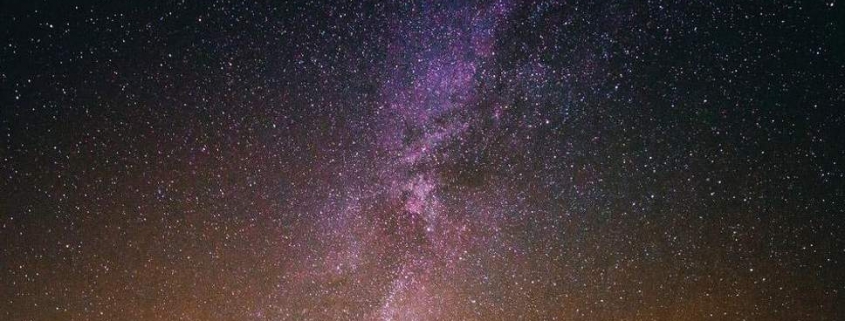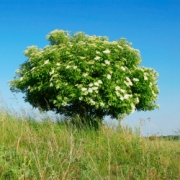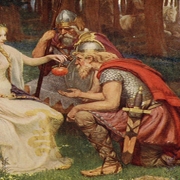The Great Year
The Gods and Goddesses of Odinism
Copyright © 1996 The Circle of Ostara
Published with the kind permission of the Circle of Ostara.
This article must not be republished or reprinted
in whole or in part without their express written permission.
The Web of Wyrd is by no means a static construction. It is motion made manifest. The flashing patterns of energy within the heart of the atom, the wheeling dance of galaxies and stars, all is motion.
It is within this concept of a cosmos in continual, rhythmic, patterned motion that the idea of the “Great Year” must be considered. From the outlook of science it is at least acknowledged from the evidence that the Earth goes through recurrent cataclysmic upheavals, owing to natural causes, which appear to occur on a cyclic basis. The mythology of all races and religious groupings is full of folk-memories of such cataclysms.
Numerous scientific theories have been put forward to account for these cataclysms: that the Earth has captured a series of moons which have fallen one by one to the surface; that vast accumulations of ice at one or other of its poles become top-heavy and cause the Earth to capsize; that in its journey along the edge of the galaxy the solar system periodically enter zones of intense meteor and comet showers, and so on.
We do not intend in this article to discuss these theories as to the cause of Earth’s periodic upheavals. That they do occur we firmly believe. It is the fact of these cataclysms that has given rise to the concept of the “Great Year”, a concept that will no doubt be familiar to many.
Over recent years, the Circle of Ostara has developed its own version of this idea, a version which is more overtly mythological than purely scientific theories and which includes the concept of the multiverse. The ideas which are presented in this article are a mere outline, a sketch, of a more complex scenario which is itself a reaching out for a glimpse of primal truth. They should not be considered in any way to be a religious dogma. We are not attempting to lay down divine or physical “law” but seeking for truth, the underlying reality that can only be realised intuitively and expressed by means of mythological symbols.
Suppose a cataclysm – some great devastating event which has inundated dry land, raised mountains from the sea bed and changed totally the outline of the Earth’s land masses. The life-forms on the Earth have suffered great destruction, some species may have been totally wiped out.
Prior to the cataclysm the Earth’s vital energies had slowed down, become weakened. As a result of the upheaval or as a result of whatever caused the upheaval the Earth’s powers are restored, revitalised.
We have just described what can be called the end of a “Great Winter”, and the resurgence of life, the renewal of Earth’s powers, are a “Great Spring”, an upsurging of joy and new growth in all the life of the Earth and in the Earth herself, leading to the “Great Summer”, the new Golden Age.
There may be, for all we know, an infinity of “worlds” in the multiverse, hidden from us by the limitations of our finite senses. The three worlds of Yggdrasil, the Tree of Life (further subdivided in our mythology to make nine), are all that we can comprehend and of these Midgarth, the World of Form, is clearest to us and can be appreciated by the rational, materialistic mind. The untrained person, unless he is highly talented, has in this Dark Age little awareness of the spirit worlds of Lightness and Dark, Asgarth and Niflheim.
As the Great seasons of the Earth change, human awareness of the other worlds fluctuates. In the Great Summer, the Golden Age, the so-called veil between the worlds is thin, the beings of the physical and spiritual worlds are aware of each other and communication is easy. To “travel between the worlds” is common. Mankind lives in harmony with the gods and other spiritual beings and accepts the fact as self-evident that human beings are spirit, clothed in flesh, that other spiritual beings are clothed with the bodies of plants and animals.
In the summer of the Great Year the vital forces and Odic currents of the Earth flow freely, in natural channels through the natural landscape. As the Great Year wanes the currents flow more and more weakly and men build accumulators (pyramids, chambered cairns, stone circles, etc.) and make channels so that the currents can flow more easily (ley lines). This, in our hypothesis, happened the last time around. As the Great Winter sets in these vital forces flow more feebly yet. They dwindle and stagnate. Men lose their awareness of them, the memory is kept only in folklore, the use of ley lines, stone circles etc. is forgotten. Human beings become more and more materialistic – the “veil” thickens between men and gods and the spirits of nature. Religions such as Christianity and other monotheistic doctrines come to the fore and the purpose of human endeavour is seen as the conquering of nature, the manipulation of matter. The end of the Great Winter is marked by cataclysm – Ragnarok – probably a natural upheaval helped on by human irresponsibility. The cataclysm is followed by a new upsurge of life, a new Golden Age.
The above or some such scenario is given credence by folk memories and myths of many different peoples.
We who live at the end of a Dark Age, a Great Winter, can already feel the stirring of new spiritual and etheric forces although the culminating cataclysm is yet to come. We suffer disability both from the darkness of the Age and from the conditioning process that has been inflicted upon us by the spiritually weak but materially strong groupings who gain ascendancy at such times. But, sometime during the past century, we experienced a “Great Yule”, the Great Year turned. As in the annual cycle of the Earth we suffer the worst weather of the winter after Yuletide, so too with the Great Year. Even as the cataclysm approaches the Light intensifies, the “veil” becomes less opaque. The spiritual and physical forces of the Light begin to rally, to fight against the powers of Darkness, though at first they suffer defeats and setbacks.
The Dark Forces also rally and, using knowledge they have gained in the physical sciences, prepare weapons of vast destructive capacity. The cataclysm when it comes will be, at least in part, the result of these weapons. There is much mythological material in the lore of all races and nations which tends to make us believe that this may be a common enough occurrence at the end of a Dark Age.
And what of ourselves as individuals? Many of us quake and tremble at the idea of such horrendous destruction. The idea that “the end of the world is nigh” has been floating around in the collective unconscious for the past two thousand years or so but never with such credibility as now. “Ban the bomb!” we cry, seeking to put off the evil day, and the “saving of life” becomes a thing a paramount importance, even in this world where the populations of some races have far outstripped the ability of ecology to support them. To the materialist who see nothing beyond this life, as to the Christian for whom “hellfire” awaits, death appears as the horror of horrors, to be avoided at all costs. “Ban the bomb”, “Better red than dead”, “We don’t want to die!” they cry, forgetting, or hiding from the fact, that in our material bodies we are all mortal beings. We will all “die”. Our awareness of ourselves as spirit is dim in the darkness of the Age. Our rational minds forget that the spiritual part of us lives outside the time-bounded World of Form and cannot “die”. “Death”, annihilation, is a concept that has little real evidence to support it. All nature sings of renewal, rebirth. There is no death, only patterned dancing change within the Web of Wyrd, the All, of which we are all part.
And this is the message of the Ragnarok myth: on all levels, the annual cycle and the Great Year, the life of a plant or the life of a man, there is no death, only change, sleep followed by waking, death that leads forward into new life. The cataclysm that heralds in a new Age of harmony and joy.
And we, who fight in the Battle of Ragnarok, will survive, though we “die” in the struggle. We will live again to build the civilisations of the new Golden Age.




